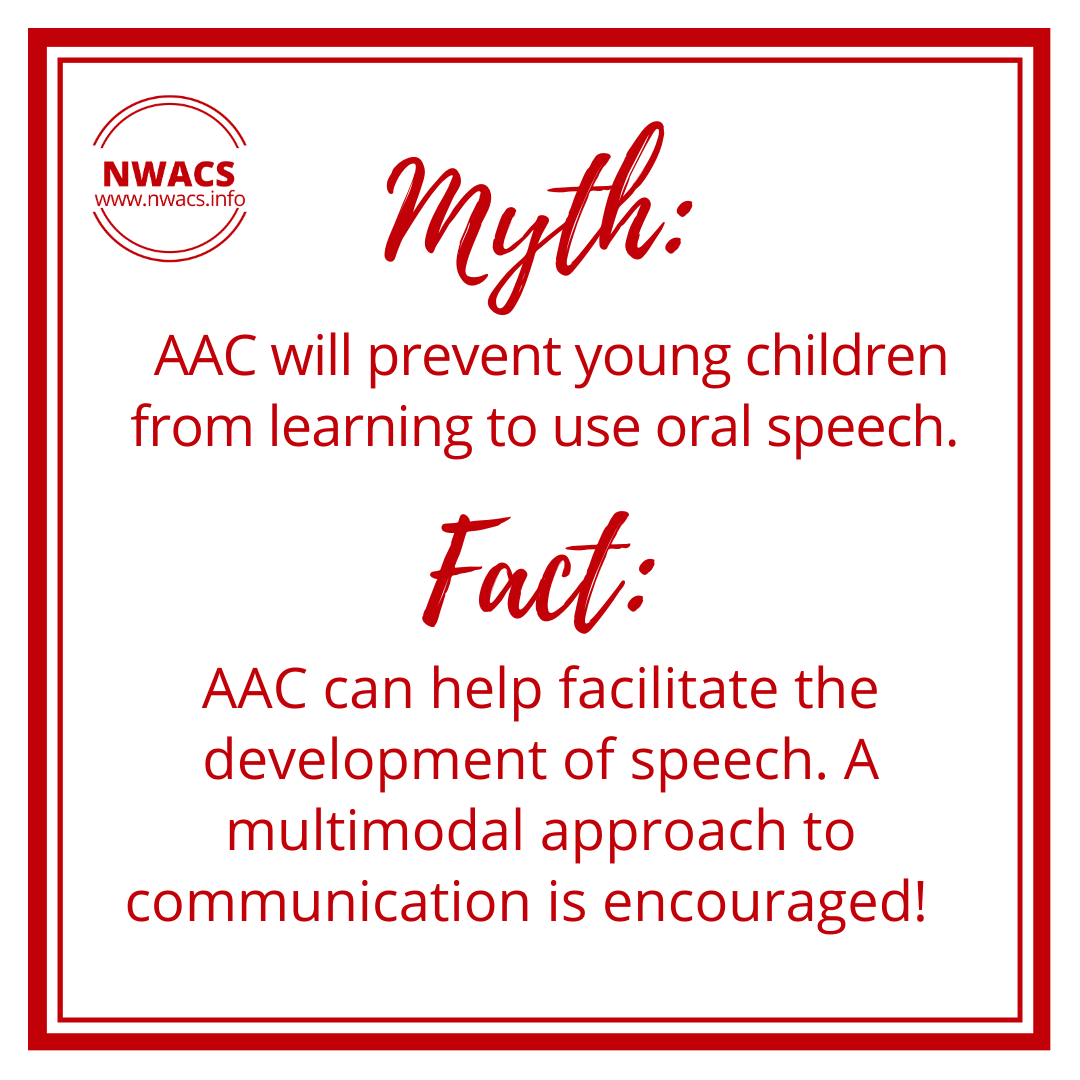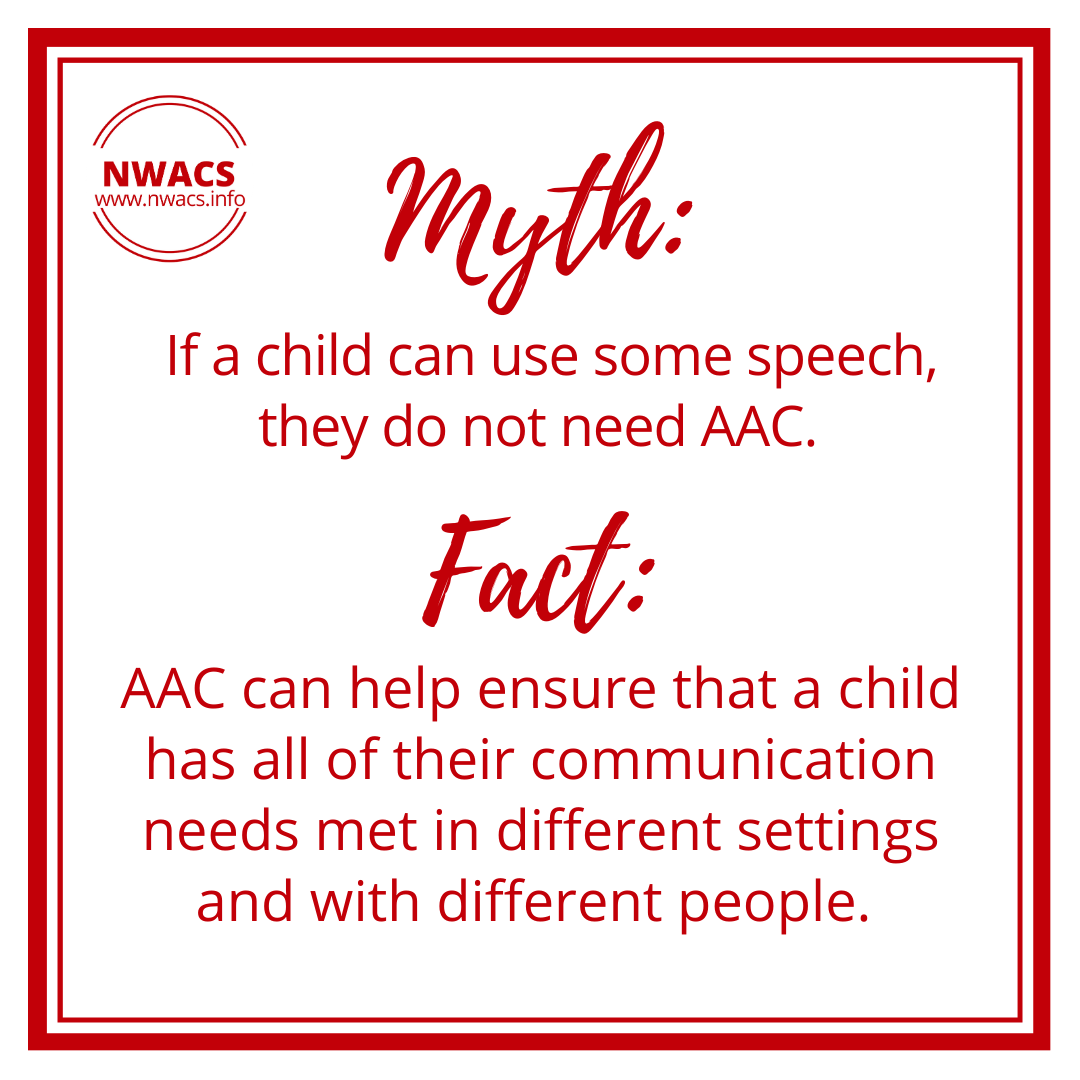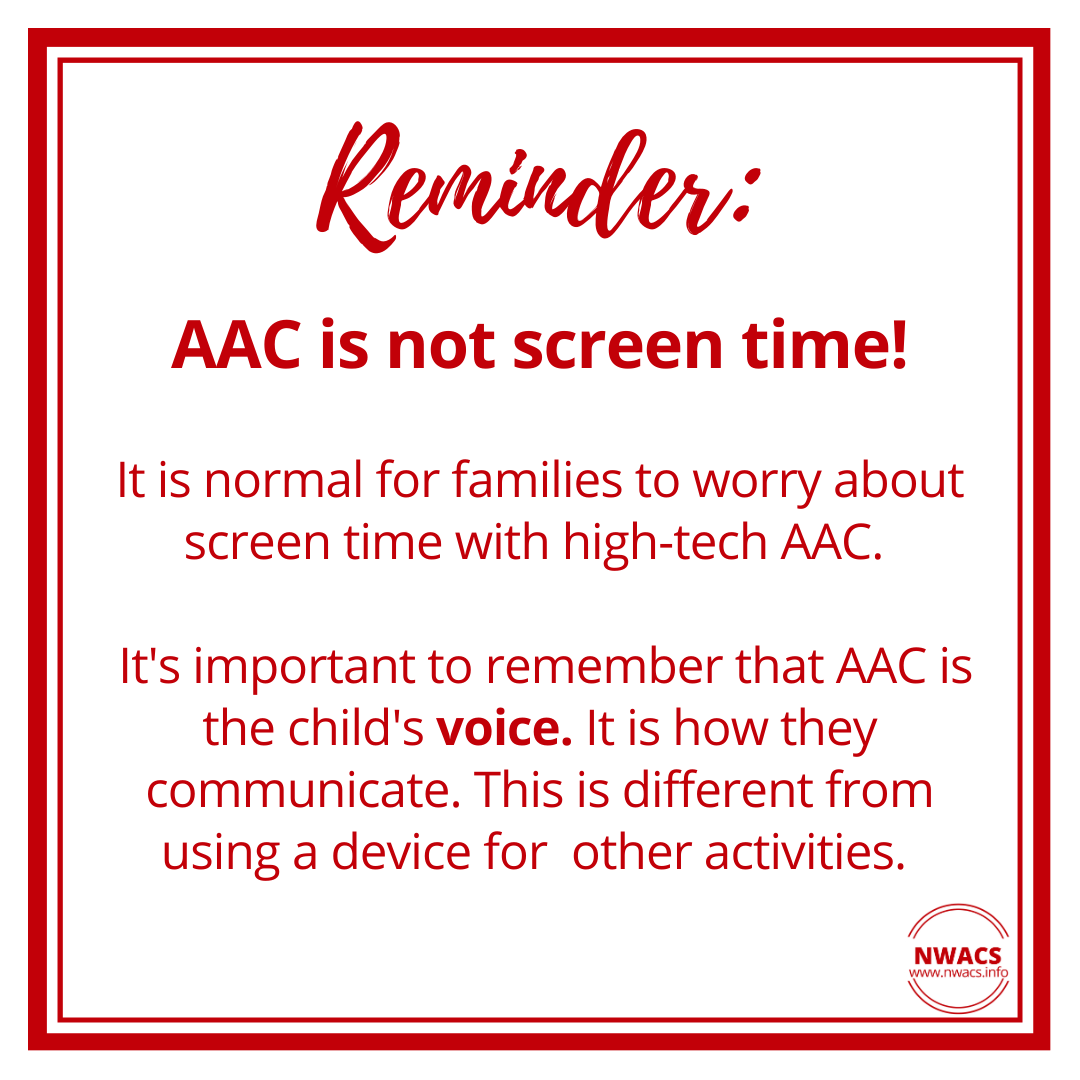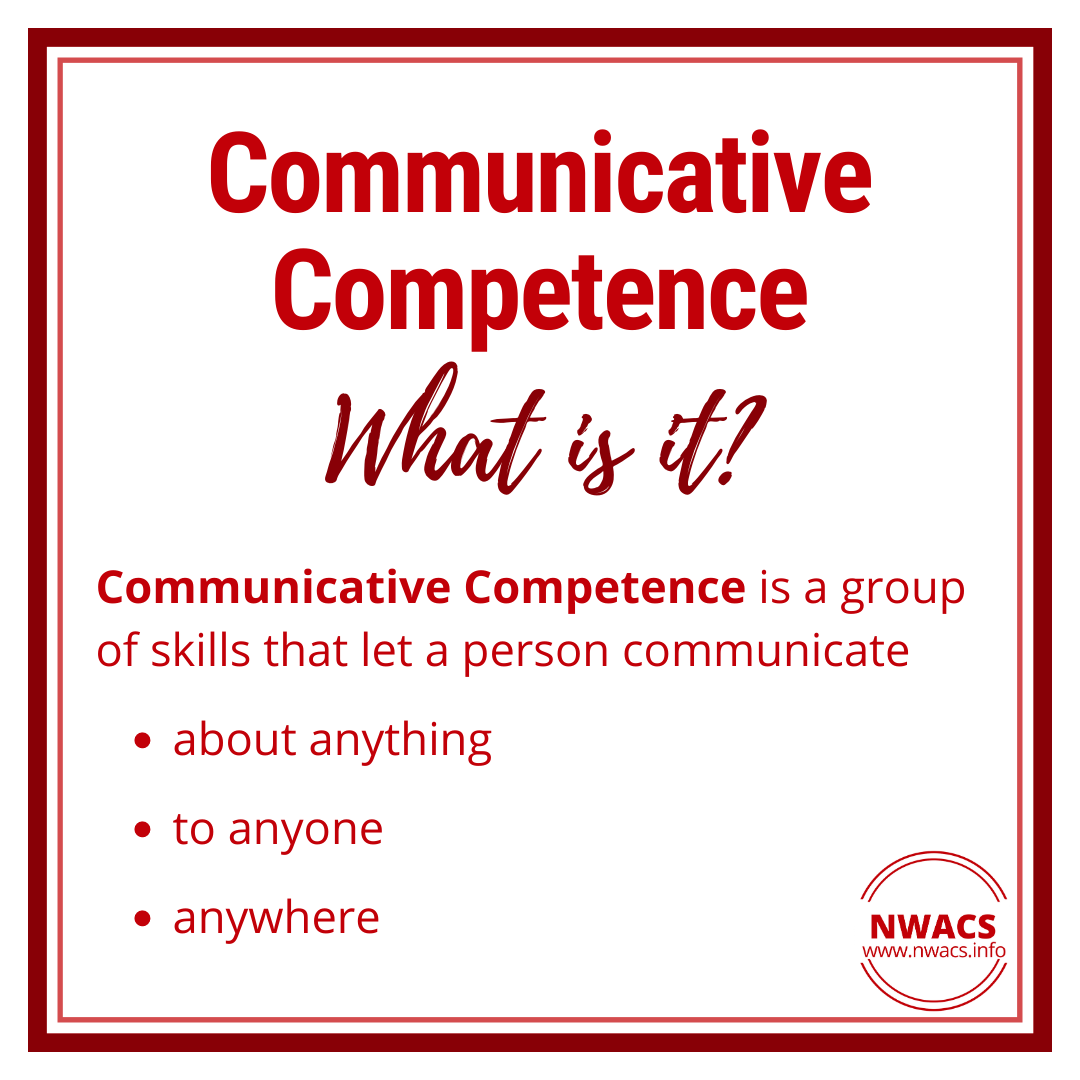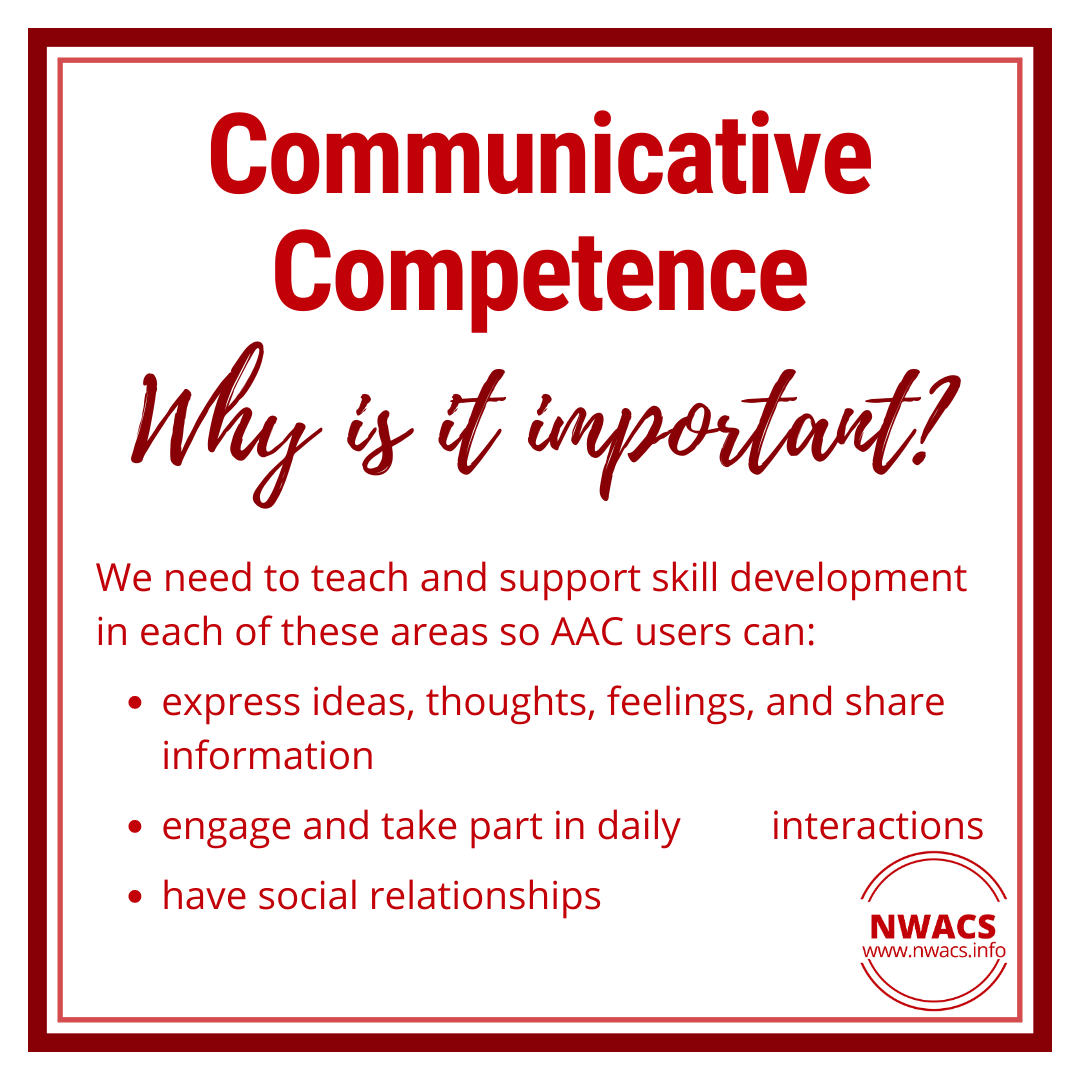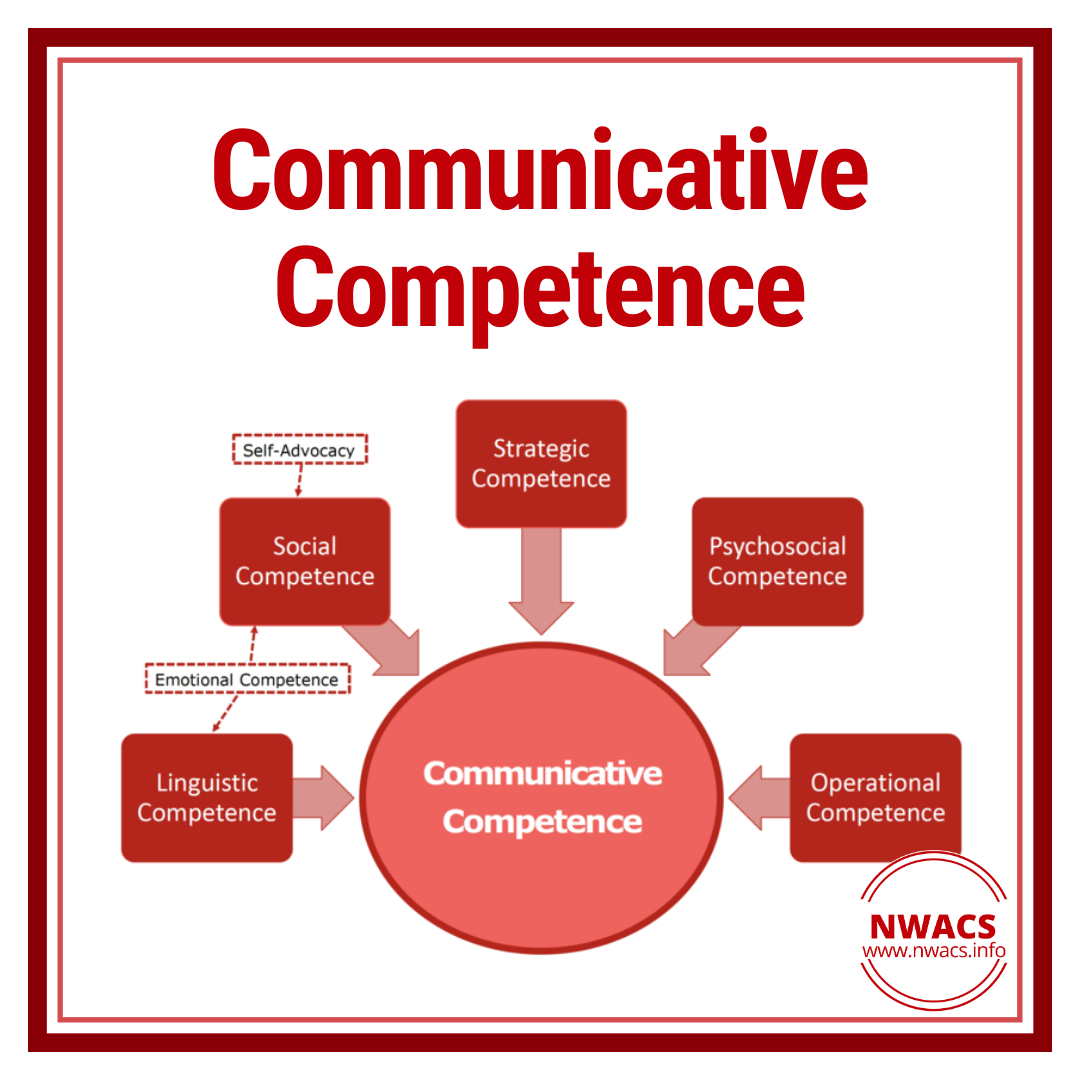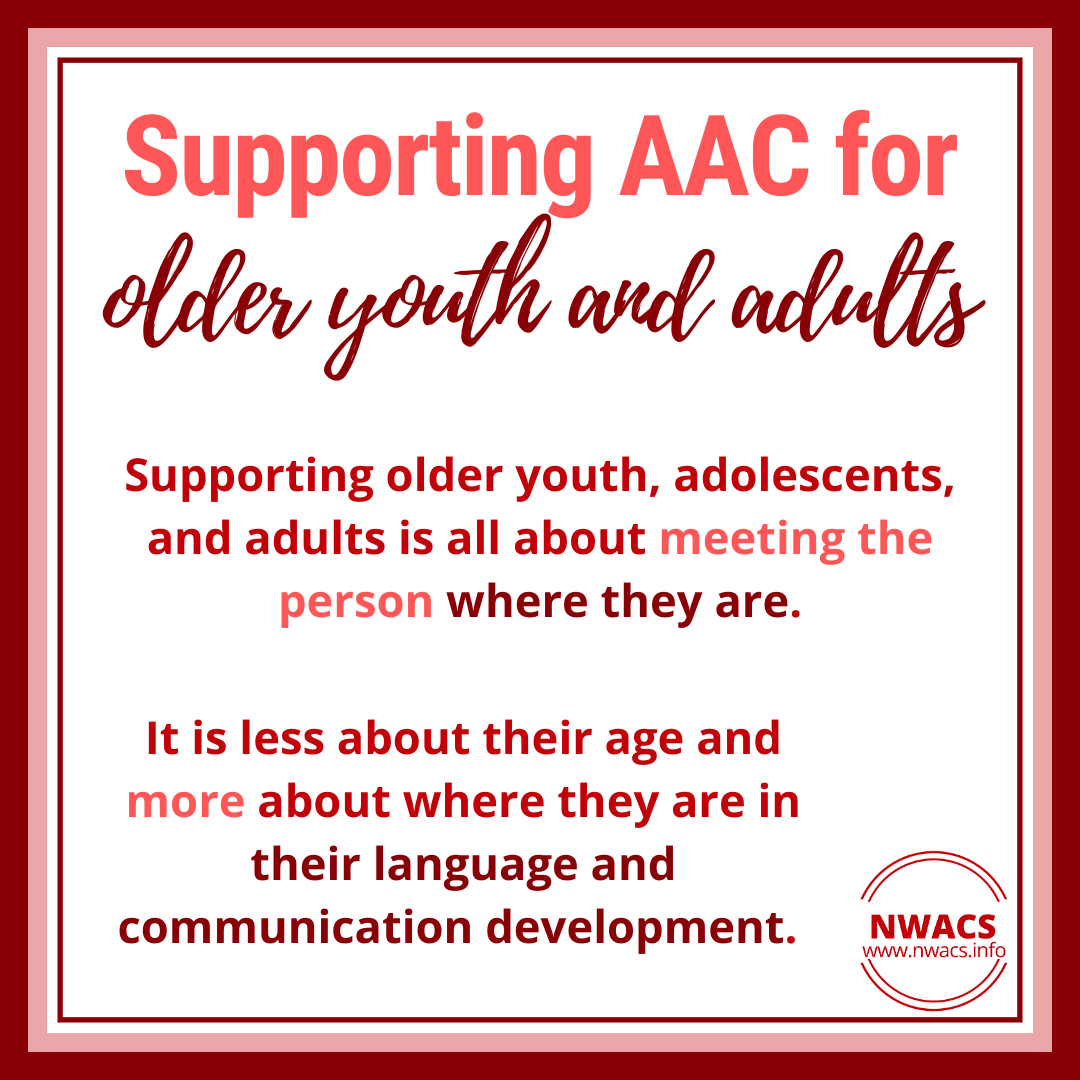by Alicia Alverson, MS, CCC-SLP, ATP (speech/language pathologist); NWACS board member
reading time: 6 minutes
Here we are, closing out 2023. We covered a HUGE topic this year – AAC Across the Lifespan. We packed in so much information and resources as we covered six different age groups:
birth to three
preschool
school-age
adolescent
adults with developmental disabilities
adults with acquired communication impairments
I’ll highlight some of my favorite things that I learned. I'll link several places to find more information. Casey, our website coordinator, was busy creating curated resource pages for each population group. I highly suggest exploring these. They are full of information!
AAC in the birth to three population
One of the big takeaways is that it’s never too young to start AAC. The best time to start is now! There are NO prerequisites for starting AAC. If we presume competence and potential. If we believe children can learn. We then have a great foundation to start teaching and supporting AAC. We start a child’s journey with AAC with teaching rather than testing. When we do these things, we are giving a child an equitable learning environment. We are building on their strengths. We are encouraging their individuality.
One big concern that I hear often is that AAC will hinder a child’s speech development. That they will not be motivated to then use their verbal speech. Several studies have found that just the opposite is true. AAC can help facilitate the development of speech. This also means that AAC isn’t just for children who don’t speak at all. It can be very helpful for children who have some speech. The benefits to AAC are plentiful.
Another concern I hear is that AAC is screen time. AAC is not screen time. It is communication. Many articles discussing screen time state that AAC is an exception. One of the big takeaways for me is that communication is an active task. Many articles discussing potential risks of screen time are addressing passive screen time.
When we’re supporting AAC, as professionals, it is crucial to stay family- and child-centered. This means involving the family in therapies and goal setting. This means building off children’s interests. Using those to teach communication skills in naturally occurring contexts. This is also an important step in showing a child that they have their own power in this world. That their choices matter. That their interests are valued. That we are going to support their agency and autonomy.
Related blog posts:
AAC in the preschool population
As we approach the preschool years, we want communication development to continue to be fun. It is child-led and play-based. Repetition in play is important for learning. Dr. Karyn Purvis reports that it takes about 400 repetitions to create a new synapse in the brain. But, if learning is done through play, it can take only 10-20 repetitions.
During the preschool years it is important to start supporting early and emergent literacy development. Language and literacy develop together. By supporting literacy development, we are also supporting language development. And vice-versa. We can support early literacy through:
shared reading activities
developing print concepts
playing with sounds, letters, and words
teaching letter-sound correspondence
shared writing activities
Allowing room for exploration and play with language and literacy is so important in supporting development. We can create meaningful communication and learning opportunities through experiences and play. And of course, keeping learning fun!
Related blog posts:
AAC in the school-aged population
As we move into the school-age years we cover a large developmental span from kindergarten to middle school. Communication is about connection, not compliance (this is true no matter the age). It is important to remember this as we are teaching because we want to support and teach:
the concept of consent
self-advocacy skills
self-determination skills
the ability to communicate about emotional, mental, and physical self
These things are hard to foster and develop in a compliance-based model.
During the school-age years we want to work on developing and growing communicative competence. We want to provide AAC systems that can grow with the child. When choosing AAC systems we can ask ourselves:
What does the child need today for communication?
What do they need tomorrow for communication?
What might they need next year for communication
What might they need in five years for communication?
We want to aim for best-case scenarios. We can always do less with more. It is very difficult to do more with less.
We can support language learning by explicitly teaching concepts and word meanings, like word endings and grammar. Students deserve to start learning about their communication rights. And let’s continue to make learning fun!
Related blog posts:
AAC in the adolescent population
As we move into supporting adolescents, we start to see a greater focus on planning for the future. We need to ask, how can we support our adolescents in their vision of their future? Transition planning already started in early childhood but becomes increasingly important during this age.
If an adolescent does not have their own AAC system, it is time to work toward securing one. If they are using a school-provided system, will this go with the student when they graduate from high school and transition services?
We need to look at the vocabulary and language adolescents have access to. It is hard to “adult” when you don’t have the words, language, or concepts for “adulting.” We want to ensure access to language for:
daily activities (work, college, finances, etc.)
boundaries, advocacy, and consent
medical and health needs – including sexual health
community involvement (politics, voting, world events, rights)
mental health and emotional well-being. This includes the hard stuff – life, death, depression, anxiety, eating disorders, etc.
In addition to having access to the language around these activities. We also want to teach and support these activities. If we haven’t already, it is time to start including adolescents in their future planning. It is important to remember that children with disabilities also become adults. We need to start supporting the communication skills that adolescents will need in adulthood before they are adults.
Related blog posts:
AAC for adults with intellectual and/or developmental disabilities
As adolescents transition into adulthood, we want to support psychosocial competence. This supports quality of life. Communicative competence supports psychosocial competence. So, we want to keep supporting and building on communicative competence. Communication will look different for each adult. Some may have emerging communication skills. Some may communicate independently. Some may need picture symbol support for communication. Some may be fully literate and will spell for communication. Some may have their own unique and unconventional ways of communicating. We must continue to value and respect the ways adults communicate. We want to meet them where they are and help them build on their strengths. Patience is important as we support communication. We want to continue to support language, literacy, and communication development. And life skills!
We want to thoughtfully support and encourage independence, autonomy, and agency. Communication is a choice. The decision not to communicate is also a choice that should be respected. Adult AAC users have the right to fair employment opportunities. They have the right to participate within their communities. They have the right to build and engage in meaningful, positive relationships, both platonic and romantic. Without judgement, persecution, or infantilization.
Learning never stops!
Related blog posts:
AAC for adults with acquired communication impairments
As we look at acquired communication impairments, we cover many conditions and disabilities. These occur due to an injury or medical condition. AAC interventions can look different depending on the medical setting. They can vary based on the type of acquired condition being treated.
It is important to start considering AAC for people with degenerative diseases before they need it. Dynamic AAC systems are a must. As with all populations, communication will be multi-modal. It is important to consider features like:
voice banking
message banking
“double dipping”
phone, internet, social media, email integration
AAC interventions will address a loss of function rather than communication development. It is important to consider and support grief that can come along with loss of function. Intervention will often include counseling. Communication partners are important to include in assessment and intervention.
Related blog posts:
And that’s a wrap! I touched on some of the highlights we covered in supporting each age group/population. Some common themes among anyone using AAC emerged.
Presume competence and potential.
Support, respect, and encourage agency, autonomy, self-advocacy.
Learning is best when it is fun and meaningful!
AAC users have the right to be involved in their journey.
Communication is multi-modal.
AAC users have communication rights.
I highly encourage you to check out the curated website pages and related blog posts as well. Each of these has been linked in each above section.
I hope everyone has an enjoyable holiday season. I look forward to introducing our 2024 theme – The Literacy Bill of Rights - next year!
Do you have any favorite highlights from our 2023 theme? Comment below with them.

